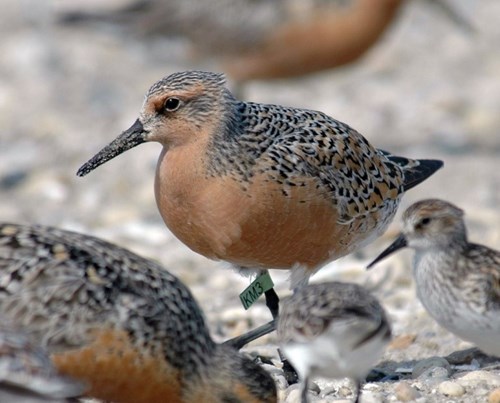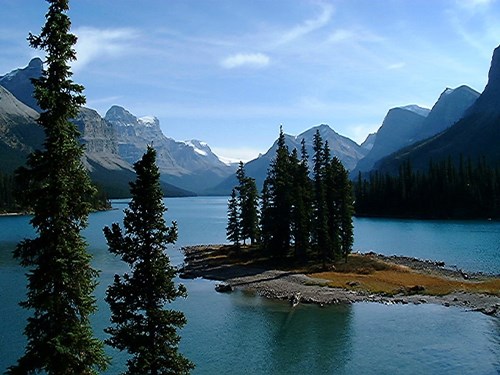Migration and Climate Change; a Complicated Relationship (Part 1)
Friday, January 5, 2018In summer, food sources such as insects and vegetation blossom in abundance, but in winter food is scarce and conditions are harsh. Some birds get the best of both worlds by flying north to breed and raise their young in habitat blessed with an abundance of food, then going south to survive the winter in easier conditions. Because many birds migrate, in spring there is a rush to reach the best breeding sites in northern latitudes first. Nevertheless, if birds migrate too early, there might be too much snow and cold, or not enough food to survive. If birds migrate too late, there may not be any breeding sites or territory left, or only very low quality areas. It is a delicate balance. However, birds have a significant advantage over other species because of their ability to fly. For example, when there are small scale disturbances such as a wildfire, birds can relocate.
What’s the problem then?
Climate change can turn the advantage of long distance migration into a serious disadvantage. By 2100, in a conservative modelling scenario, Earth’s temperature is projected to rise by around 2C. However, as the climate warms, it does not warm evenly. There is limited warming at the equator, but strong warming at the north and south poles. When the Red Knot decides it is time to make its 14000 km journey from the southern tip of Argentina and Chile to the Arctic to breed, there is no way it can know what the conditions are at its destination. Because temperatures in the wintering grounds may be warmer or cooler than the corresponding changes at the breeding grounds, the Red Knot may get the cue to migrate at the wrong time.
If the Red Knot migrates too early, there may not be enough food. After having flown thousands of kilometers, this bird will have lost up to half its body weight, and needs to regain weight immediately to be ready for breeding. If it cannot find enough food, it may be unable to breed, and may even die. If instead the Red Knot migrates too late, it may experience mismatch. Food sources such as insects become abundant early, and by the time the Red Knot is feeding its young, there are fewer insects available. In addition the arctic summer is brief. If birds delay their arrival they may not have enough time for the young to fledge before the next winter arrives. These effects are more subtle and can result in consistent reduction in the numbers of young birds surviving each year. The rufa subspecies of the Red Knot is already classified as endangered in Canada and the impacts of climate change will only add to the challenges they face.
What can I do?
Climate Change is being driven by humans’ consumption of carbon based fuels. How can use reduce your carbon food print? Take local vacations! No form of transportation emits more greenhouse gases per person than an airplane. The cost of one transatlantic round trip flight is 1.6 tonnes of carbon. Canada is a big country and well worth exploring. Even Alberta has a wide variety of environments including the Rocky Mountains, grasslands, boreal forest, and parkland. People travel from Europe to ski in the Rocky Mountains or to visit the Royal Tyrrell Museum. Try visiting a nearby landmark you have never been to before. You will be helping the environment while gaining new experiences!

Photo Credit:
Migration photo by David King from Haifa, Israel. 23 March 2008. https://commons.wikimedia.org/wiki/File:Seasonal_Bird_Migration_(2356814851).jpg
By U.S. Fish and Wildlife Service Headquarters (Red knot Uploaded by Dolovis) [CC BY 2.0 (http://creativecommons.org/licenses/by/2.0) or Public domain], via Wikimedia Commons By leftantler - Flickr, CC BY 2.0, https://commons.wikimedia.org/w/index.php?curid=1673441
Spirit Island, Maligne Lake Photo by leftantler. 24 September 2001. https://commons.wikimedia.org/w/index.php?curid=1673441
Additional Reading:
https://www.theguardian.com/environment/datablog/2009/sep/02/carbon-emissions-per-transporttype
https://climate.nasa.gov/effects/
http://www.registrelep-sararegistry.gc.ca/species/speciesDetails_e.cfm?sid=980
IPCC, 2014: Climate Change 2014: Synthesis Report. Contribution of Working Groups I, II and III to the Fifth Assessment Report of the Intergovernmental Panel on Climate Change [Core Writing Team, R.K. Pachauri and L.A. Meyer (eds.)]. IPCC, Geneva, Switzerland, 151 pp.
Wynes, S., and Nicholas, K. A. 2017. The climate mitigation gap: education and government recommendations miss the most effective individual actions. IOP Science 12(7) Retrieved on November 15 from http://iopscience.iop.org/article/10.1088/1748-9326/aa7541/meta
Blog Posts
- What is Climate Change
- Drought: What Can We Do?
- Migration and Climate Change; a Complicated Relationship (Part 1)
- Migration and Climate Change; a Complicated Relationship (Part 2)
- Climate Change and Birds’ Resources
- Ladder to Extinction
- Arctic Warming and Ecosystem Impacts
- Climate Change Connection to Mountain Pine Beetle
- Tackling Climate Change Denialism
- Impact of Climate Change on Bluebirds
- An Introduction to Climate Change
- Great Decline of Aerial Insectivores
- Role of Oceans in Fighting Climate Change
- Role Of Forests In Fighting Climate Change
- Impact of Climate Change on Shorebirds
- Impact of Hurricanes and Climate Change on Birds
- An Introduction to Climate Change.
- Impact of Forest Fires, and Climate Change on the Nature
- Impacts of Climate Change on Owls
- Impacts of Climate Change on Birds of Prey
- Whitebark Pine and Clark's Nutcracker
- COVID 19 & The Environment
- Impact of Global Warming on Bird Anatomy and Colour Polymorphism
- Climate Change & West Nile Virus
- All Posts

